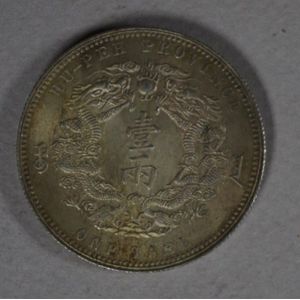Victorian Japonais Engraved Salver by Elkington & Co
You must be a subscriber, and be logged in to view price and dealer details.
Subscribe Now to view actual auction price for this item
When you subscribe, you have the option of setting the currency in which to display prices to $Au, $US, $NZ or Stg.
- Engraving - The method of decorating or creating inscriptions on silver and other metal objects by marking the surface with a sharp instrument such as a diamond point or rotating cutting wheel.
- Salver - A plate or tray used for the formal offering of food, drink, letters or visiting cards, usually of silver plate, silver or silver-gilt. Large, heavy, oblong or oval silver salvers evolved into what we know as trays in the 18th century. Small, flat salvers are known as waiters.
- Japonaise - In 1853, Japan ended the long period of self-imposed isolation from the rest of the world and trade with Europe and America gradually developed. Impetus was given by the Meiji Revolution of 1867-8 which began the ruthless Westernization of Japan. As the Japanese enthusiastically embraced all things western, there was a corresponding appreciation of traditional Japanese art forms in the west. This led to traditional Japanese designs being incorporated into furniture, ceramics, and silverware in the third quarter of the 19th century.
Examples of the Japanese influence are Japanese motifs, faux bamboo, fretwork and lacquer work. - Lion's Paw - The decorative lion's paw has been used in furniture, silver, and ceramics for centuries. It is a stylized representation of the paw of a lion, often depicted in a highly realistic or stylized form.
In furniture design, lion's paws were popular in the neoclassical and Empire styles of the late 18th and early 19th centuries. They were often used as feet on tables, chairs, and other pieces of furniture. The lion's paw was a popular motif for furniture makers because it added a sense of grandeur and regalness to their pieces.
In silverware design, the lion's paw was often used on the feet of tea and coffee pots, as well as on other pieces of silverware such as wine coolers and tureens. The lion's paw was often used in combination with other neoclassical motifs, such as acanthus leaves or grape clusters, to create a sense of grandeur and classical elegance.
In ceramics, lion's paws were commonly used as feet on vases, urns, and other pottery items. The lion's paw was often depicted in relief or as a highly stylized form, and was sometimes used in combination with other decorative elements, such as garlands or swags. - Victorian Period - The Victorian period of furniture and decorative arts design covers the reign of Queen Victoria from 1837 to 1901. There was not one dominant style of furniture in the Victorian period. Designers used and modified many historical styles such as Gothic, Tudor, Elizabethan, English Rococo, Neoclassical and others, although use of some styles, such as English Rococo and Gothic tended to dominate the furniture manufacture of the period.
The Victorian period was preceded by the Regency and William IV periods, and followed by the Edwardian period, named for Edward VII (1841 ? 1910) who was King of the United Kingdom and the British Dominions and Emperor of India for the brief period from 1901 until his death in 1910.
This item has been included into following indexes:
Visually similar items

Georgian hallmarked sterling silver salver. London 1822. Maker EI. Monogrammed to top; underside with inscription Lt. Col. and Mrs Ironmonger to Mrs Pickering, Forton farm 1831. Three ball and claw feet. Diameter 31 cm. Weight. 850g

Chinese Hu-Peh Province one tael silver coin, 40 mm diameter

A Victorian sterling silver salver, 1883 London, with maker's marks for Martin Hall & Co, the tray of Eastern inspiration with a beaded rim and vegetal border in low relief with an engraved tray section, raised on cast feet; crisply hallmarked underside, s

Sterling silver medal for good conduct marked Wellington
